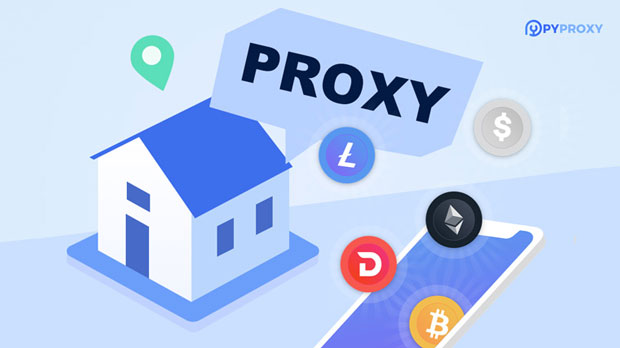How does the Socks5 proxy work? From setup to connection
socks5 proxy is a versatile and secure protocol that allows users to route internet traffic through an intermediary server. This process can help with anonymity, security, and bypassing geographical restrictions. Whether you're aiming to secure your connection or access blocked content, setting up and using a Socks5 proxy can be highly beneficial. In this guide, we’ll walk you through the entire process, from setting up the Socks5 proxy to connecting it with various applications. By the end, you’ll have a complete understanding of how to use socks5 proxies for your specific needs. What is Socks5 Proxy?Socks5 is a protocol used for internet traffic routing, which works by acting as an intermediary between your device and the internet. Unlike other proxy protocols, Socks5 can handle a wider variety of traffic types, including TCP and UDP, which makes it more versatile. It does not modify your data or alter the packet information, allowing it to be less detectable. Moreover, it provides a higher degree of anonymity compared to other proxy services, which is particularly useful for privacy-conscious users.The Socks5 proxy operates by forwarding traffic between your computer and a remote server, and it can be configured in both web browsers and applications that support proxy settings. One of the main benefits of using Socks5 is that it doesn’t require a user to configure application-specific proxies, meaning it can be used for a variety of tasks like gaming, torrenting, and web browsing.Setting Up a Socks5 ProxyThe setup process for a Socks5 proxy is relatively straightforward, but it varies depending on the device or software you’re using. Below are general steps that can guide you through the configuration.1. Choose a Socks5 Proxy ProviderBefore configuring the proxy on your device, you need to select a Socks5 proxy provider. Make sure the provider offers reliable service, good speed, and a high level of security. Once you've made your choice, sign up and obtain the necessary credentials, including the server address, port number, and login credentials (username and password).2. Configure Your Internet SettingsTo begin using the Socks5 proxy, you’ll need to configure your internet settings to route traffic through the proxy server. This involves entering the proxy’s server address and port number into your device’s network settings. - On Windows: Go to the Control Panel > Network and Sharing Center > Change adapter settings. Right-click on the active network adapter and select "Properties." Then, go to the "Internet Protocol Version 4 (TCP/IPv4)" properties and set it to manual proxy configuration. - On MacOS: Navigate to System Preferences > Network > Advanced. In the "Proxies" tab, select "SOCKS Proxy" and enter the server address and port.- On Linux: Access the system settings and choose the Network tab, then input the server information under proxy settings.3. Enter CredentialsIn many cases, Socks5 proxy services will require a username and password for authentication. Ensure that you enter the provided credentials correctly. This step helps secure your connection and ensures that only authorized users are able to access the proxy.4. Testing Your ConnectionOnce you've entered the necessary information, it's a good practice to test the connection to ensure that everything is working properly. You can check your IP address by using an online tool to confirm that the connection is being routed through the Socks5 proxy. If the proxy is working, your IP address should appear as the proxy server's IP.How to Connect to a Socks5 ProxyAfter setting up the Socks5 proxy, the next step is to connect to it through various applications. Some common use cases include web browsing, torrenting, or online gaming.1. Web BrowsingMost modern web browsers, such as Google Chrome, Mozilla Firefox, and Microsoft Edge, allow you to configure proxy settings directly within the browser.- On Google Chrome: Go to Settings > Advanced > System > Open your computer’s proxy settings. From there, configure the Socks5 settings as needed. - On Firefox: Go to Preferences > Network Settings > Settings. Select “Manual proxy configuration” and enter your Socks5 server’s address and port.Once configured, your web traffic will be routed through the Socks5 proxy, providing you with enhanced privacy and access to restricted content.2. TorrentingIf you’re using a torrent client like uTorrent or BitTorrent, you can configure the Socks5 proxy settings directly within the application.- Open the torrent client and go to the settings or preferences section.- Look for a section related to proxy settings and select the Socks5 option.- Input the server address, port number, and authentication credentials.This ensures that your torrenting traffic is encrypted and routed through the proxy, providing better privacy and security while downloading files.3. Online GamingSome online games or gaming platforms allow you to set up a Socks5 proxy for added privacy and security.- Within the game’s network settings, look for proxy or connection settings.- Enter your Socks5 server address and port number.- If needed, input the authentication credentials.This allows you to play online games without revealing your true IP address, helping with both privacy and bypassing geographical restrictions.Common Issues and TroubleshootingDespite being a reliable proxy service, Socks5 can sometimes encounter issues during setup or connection. Here are a few common problems and how to solve them:1. Incorrect Server DetailsIf you’re unable to connect to the proxy server, double-check that you’ve entered the correct server address, port, and authentication credentials. Sometimes, a simple typo can prevent the connection.2. Connection TimeoutA connection timeout may occur if the proxy server is slow or temporarily unavailable. Ensure that your internet connection is stable, and try again after a few minutes. You may also want to contact your proxy provider to verify the server status.3. IP LeakSometimes, even when using a proxy, your true IP address can still be exposed due to DNS or WebRTC leaks. To prevent this, ensure that your device’s DNS is configured to route through the proxy server. You can also use third-party tools to check for IP leaks.Benefits of Using Socks5 ProxySocks5 proxies offer several advantages over other types of proxies. Here are a few reasons why you might choose to use a Socks5 proxy:- Anonymity: Socks5 proxies can provide a higher level of anonymity, as they do not modify the data sent or received.- Bypass Geographical Restrictions: If you want to access content that’s only available in certain countries, Socks5 can help by masking your location.- Better Speed: Unlike other proxies, Socks5 doesn’t add much latency, ensuring that your internet speed remains relatively high.ConclusionUsing a Socks5 proxy is a great way to enhance privacy, security, and bypass restrictions online. Setting up and connecting to a Socks5 proxy is relatively simple, requiring you to configure your device’s network settings or specific application preferences. By following the steps outlined in this guide, you’ll be able to leverage the full potential of a Socks5 proxy for web browsing, torrenting, or gaming. Always ensure that the proxy provider you choose is reputable and provides secure, reliable service for the best experience.
2025-01-10

























































